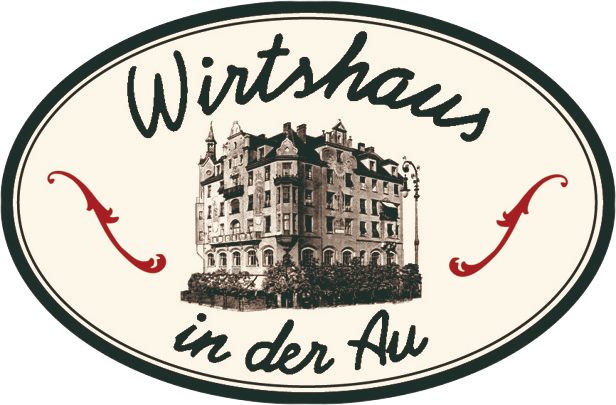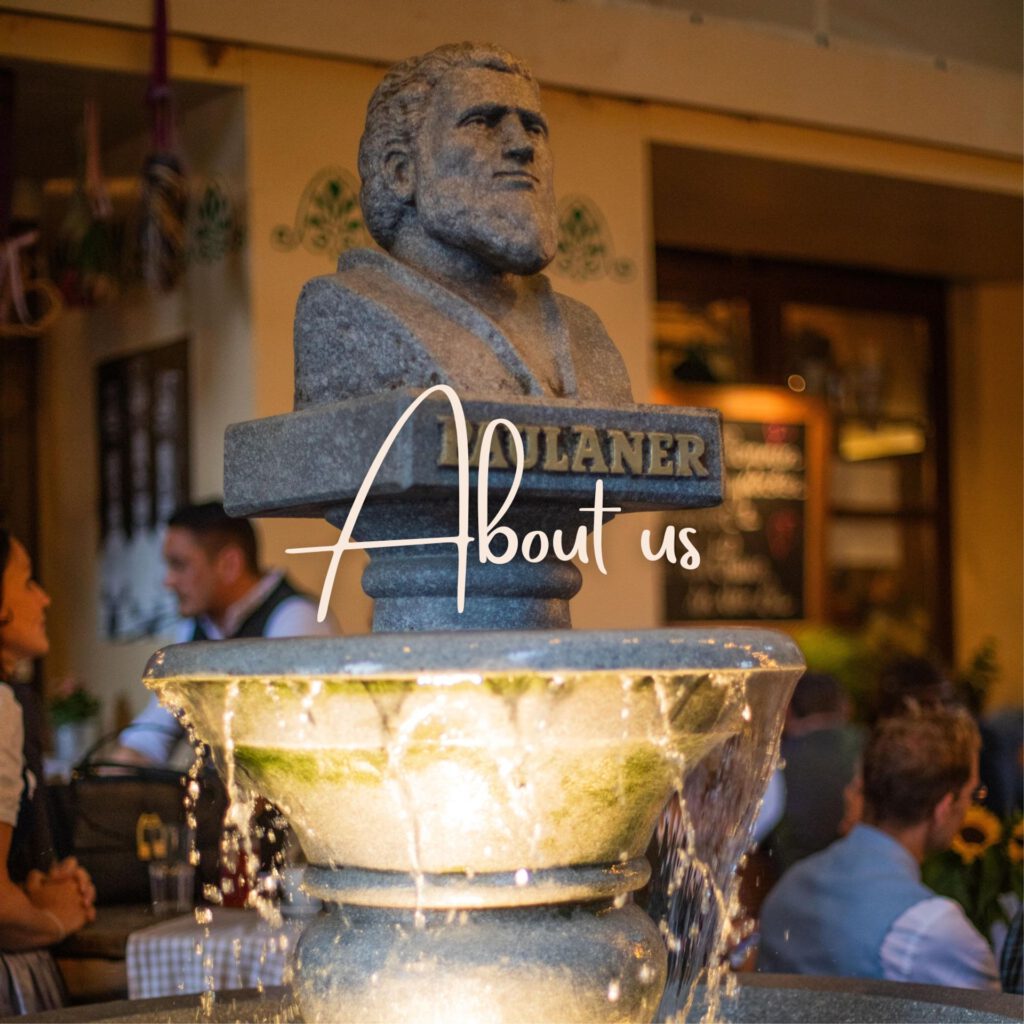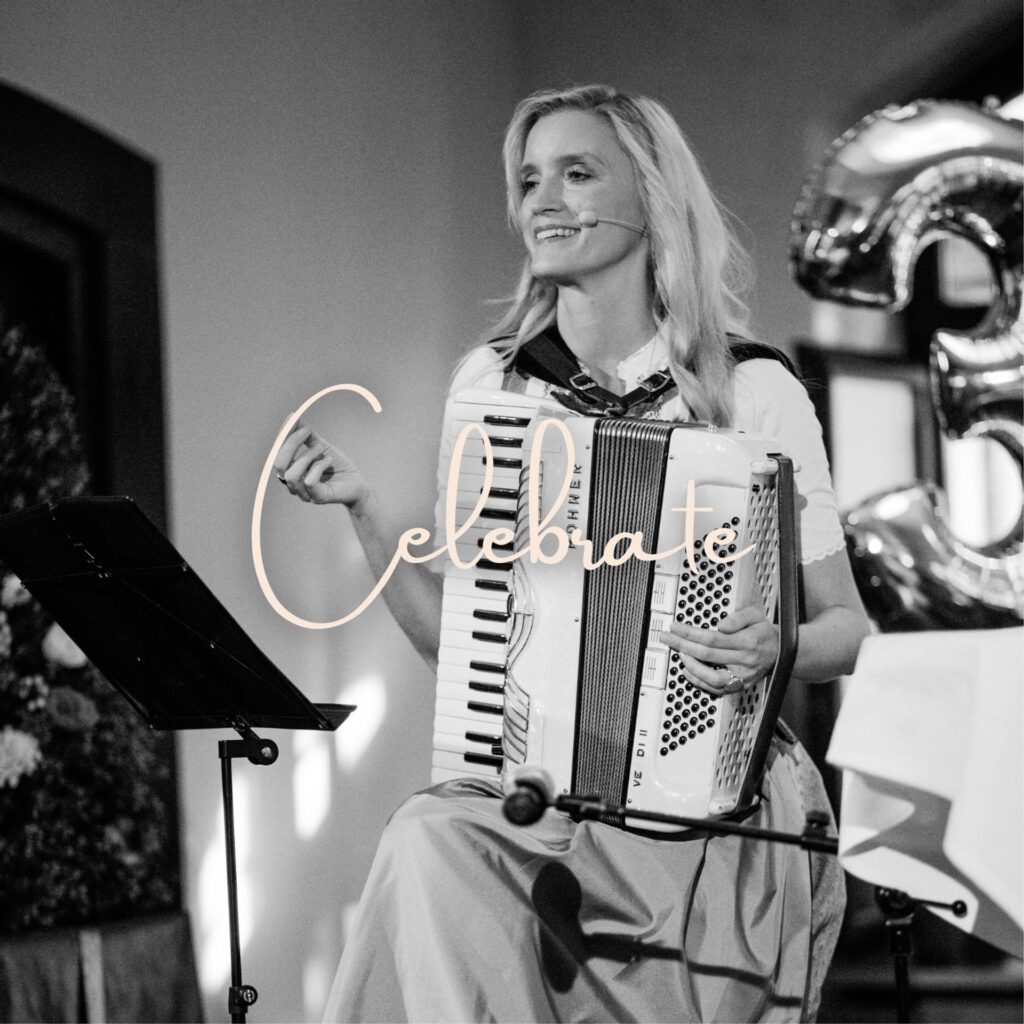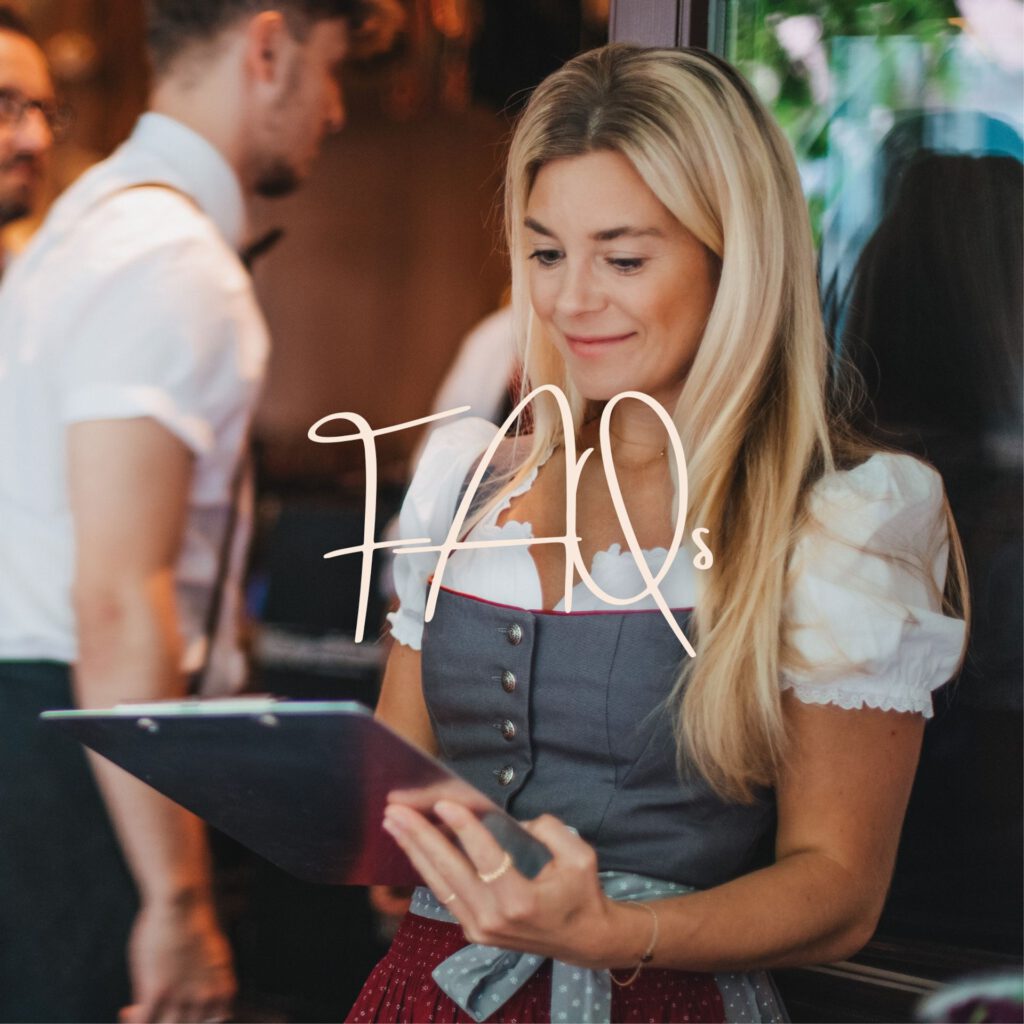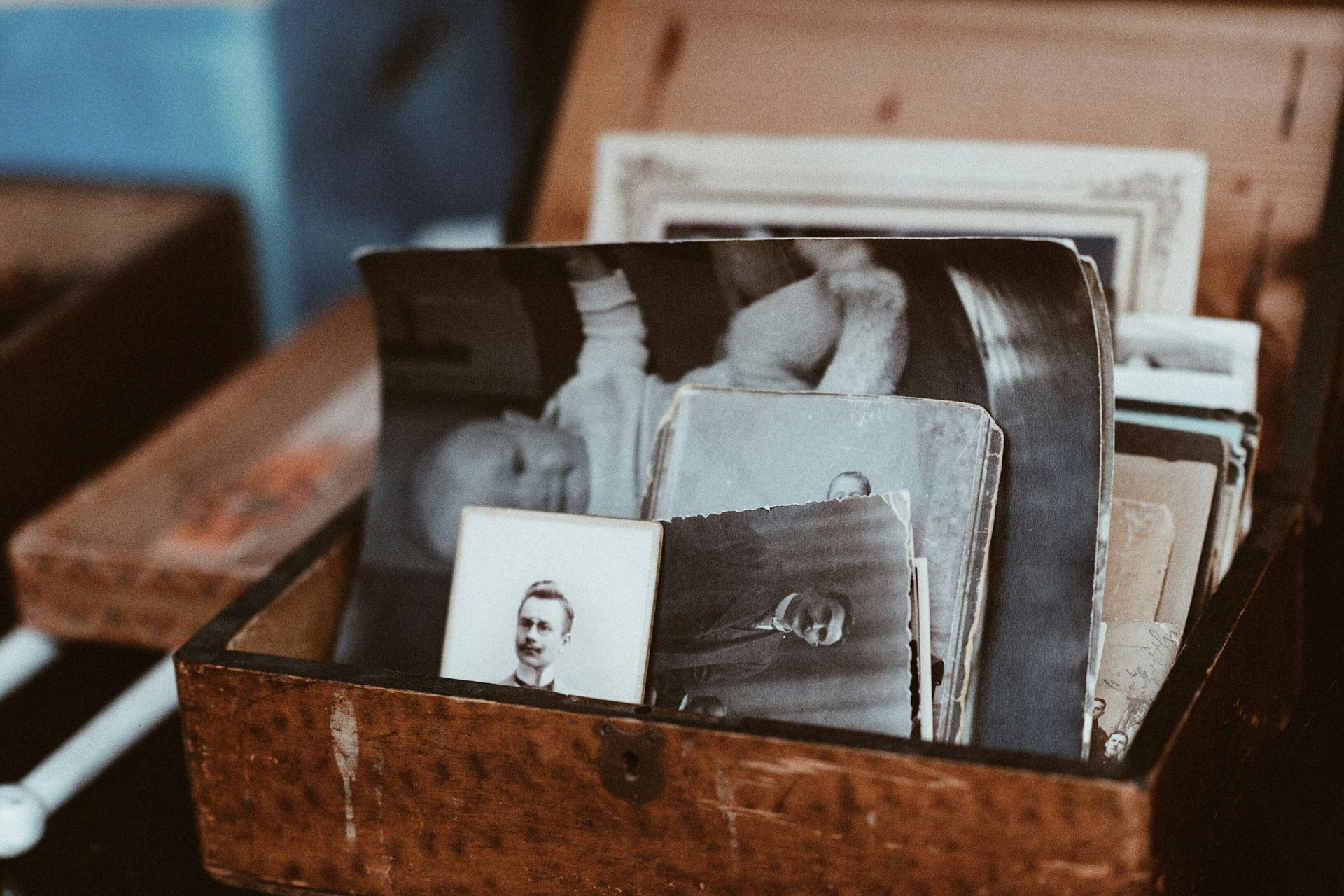
Once upon a time…
The beginning
since 1842
The land around today’s Wirtshaus in der Au coincides with the historic factory site at Wagegg, a military workhouse. When this was abolished in 1789 and became the property of the manufacturer Brügelmann, he set up a spinning and dyeing mill there, which he operated until around 1816. His business was not blessed and the large factory building was divided into 10 estates, which were passed into private hands.
Schmuckerbräu
1842 to 1858
In 1842, the former brew master Schmucker from the Heiliggeist Hospital acquired two of these properties and set up a brewery and pub there under the name Schmuckerbräu. The small brewery, which produced an excellent brew, enjoyed great popularity and the bar was very popular until Schmucker’s death. After that, the small brewery changed hands several times, none of which were successful. In 1858, the brewery was closed down and only the pub remained open.
Johann Wagner
1862 to 1901
In 1862, the brewery and pub were acquired by the innkeepers Johann and Susanne Wagner, who had previously run the Tafernwirtschaft zum Salzburger Hof. Johann Wagner, who already had a good knowledge of the brewing process, not only ran the inn from then on, but also re-established the malt house. After his death in 1901, the property passed to his son Hans Wagner, who had also learned the brewing craft. Johann Wagner left him considerable funds with which he was able to realize his plans.
Hans Wagner
1901 to1923
The Deutsche Museum was still in the planning stages when Hans Wagner put the brewery back into operation and at the same time had the Schwabing architect Joseph Bauer construct a stately new building in the immediate vicinity of the brewery. In October 1901, beer was served for the first time on the premises of today’s Wirtshaus in der Au.
Wagner’s beer soon became very popular. The brewer and landlord quickly became famous, producing almost 40,000 hectoliters of beer in his prime.
The pub was located exactly where our guests still sit today and our current Valentinssaal was already used as a banquet hall back then. As Hans Wagner’s business expanded rapidly, he handed over the popular brewery pub to innkeeper Ignaz Schmid in 1923. He opened a cozy beer garden in front of the Wagnerbräu.
Karl Valentin & Hans Wagner
1897 to 1935
Hans Wagner became aware of a red-haired rascal called Valentin Ludwig Fey at an early age. He was born in Zeppelinstraße, just around the corner, was doing an apprenticeship as a carpenter and liked to hang out in the Wagner Bräustüberl. He recognized the boy’s comedic talent and introduced him to his regular guest, the zither player Ignatz Heppner. The young boy learned to play the zither from him at Wagner’s expense. Later, when Valentin Fey performed successfully as Karl Valentin as a soloist, parodist and mimic, their paths crossed again. Hans Wagner had opened the Hotel Wagner in Sonnenstraße. This also included the Wien-München cabaret, where Karl Valentin found his artistic home with his own repertoire from April 1909. The death of Wagner in 1932 hit Karl Valentin hard. Nevertheless, he remained connected to the Hotel Wagner. After he had to close his first own theater, which he had founded in 1931 in the Goethesaal in Leopoldstraße, due to a lack of safety facilities, he opened his Panoptikum with Höllencafé in the Hotel Wagner in 1934. However, the horror and laughter cellar did not meet with the success he had hoped for and had to close just one year later.
War and reconstruction
1939 to 1961
After the death of brewery owner Hans Wagner in 1936, the property at Lilienstrasse 51 was taken over from his estate by the Städtische Sparkasse München. In 1939, the brewery was sold to a rescue company consisting of Paulaner, Löwenbräu, Spaten, Pschorr and Augustiner. In 1944, the entire brewery was destroyed by bombs during the war. The brewery bar was damaged on the north side, but was restored in 1945 so that it was open to the public. Paulaner took over sole ownership of the building in 1956. In 1961, the brewery pub was converted into a Munich-style restaurant.
Munich’s first disco & the POP Club
1963 to 1988
The wild years at Lilienstrasse 51 began in 1963, when Munich’s first discotheque, Sahara Dancing, opened on the upper floor. A year later, the Crazy Alm, a live music venue where the well-known Paul Würges Band played, opened in the traditional pub on the first floor. The famous singer Caterina Valente was a co-owner of both venues. Sahara Dancing was succeeded in 1972 by the Pop Club with DJ Chuck Hermann, who played oldies, pop and boogie woogie here until 1986. When the Pop Club closed in 1986, the Crazy Alm also disappeared. Noodles/Peppermint Park on the first floor and Lilians Affair on the upper floor made a brief guest appearance from 1987.
Wirtshaus in der Au
since 1993
A new chapter in the history of the property at Lilienstraße 51 began when the restaurant was taken over and completely renovated in 1993.
The Wirtshaus in der Au, under the management of Florian Oberndorfer, became what it still is today – one of Munich’s most beautiful and popular neighborhood restaurants. A place for friends and strangers with a beer garden, bar and authentic Bavarian cuisine. In 2000, after extensive renovation, the unique Valentinsaal was opened on the upper floor.
Münchner Knödelei
since 2002
Since the Wirtshaus in der Au is not only famous for the largest dumplings in Munich, but also for numerous dumpling specialties, it was only natural to dedicate a separate establishment to the hand-turned symbols of Bavarian food culture: The Münchner Knödelei was represented at the Oktoberfest for the first time in 2002.
It was a dream come true for the team at the Wirtshaus in der Au. The lovingly designed beer tent has 399 indoor and 400 outdoor seats.
A wide variety of dumpling dishes are offered at the stall, which looks like an oversized old oven, and in the rustic beer tent. At lunchtime there is a royal Bavarian lunch menu and traditional live music.
From a pint of Paulaner Oktoberfest beer in the sunny Knödelei beer garden to a Monaco Spritz at the Luis Bar or in the beer garden boxes – the Münchner Knödelei next to the Ferris wheel has been a popular insider tip for Munich locals and real Oktoberfest fans for years.
OPENING HOURS
Monday till Friday
5 pm – 11 pm
Saturday, Sunday, Holiday
10 am – 11 pm
Kitchen is open until 10 pm.
CONTACT
Wirtshaus in der Au GmbH
Lilienstraße 51
81669 Munich
Germany
